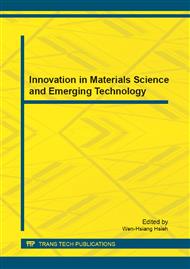p.272
p.277
p.282
p.287
p.292
p.297
p.304
p.309
p.314
A Hybrid Algorithm of Mining Closed Itemsets for Large Databases
Abstract:
Data Mining means a process of nontrivial extraction of implicit, previously and potentially useful information from data in databases. Mining closed large itemsets is a further work of mining association rules, which aims to find the set of necessary subsets of large itemsets that could be representative of all large itemsets. In this paper, we design a hybrid approach, considering the character of data, to mine the closed large itemsets efficiently. Two features of market basket analysis are considered – the number of items is large; the number of associated items for each item is small. Combining the cut-point method and the hash concept, the new algorithm can find the closed large itemsets efficiently. The simulation results show that the new algorithm outperforms the FP-CLOSE algorithm in the execution time and the space of storage.
Info:
Periodical:
Pages:
292-296
Citation:
Online since:
December 2011
Authors:
Keywords:
Price:
Сopyright:
© 2012 Trans Tech Publications Ltd. All Rights Reserved
Share:
Citation:


